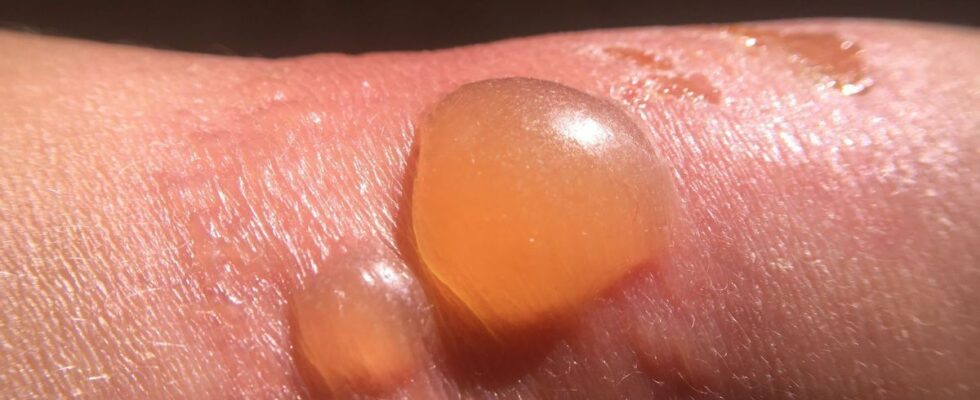Published on
Updated
Reading 2 min.
in collaboration with
Dr Gérald Kierzek (Medical Director of Doctissimo)
On June 10, a mother and her daughter saw giant blisters and red spots appear on their bodies, after getting wet with the water from Lac du Bourget, in Savoie. What is phytophotodermatosis? Explanations from Dr Gérald Kierzek, medical director of Doctissimo.
Giant blisters, a burning sensation, redness… These are the unusual symptoms that appeared on the body of Albana and her 6-year-old daughter, after an outing at Lac du Bourget, in Savoie. The mother and her daughter did not swim in the lake, however, due to the cool temperatures, but simply decided to wet their hands and legs with its water.
Blisters and redness the next day
It was not until the next day that the symptoms began. Giant blisters, redness, burning sensation… Albana and her daughter go to the pharmacy where they are told that they probably have an allergy. On June 11, they ended up going to the emergency room before eventually consulting their general practitioner.
They will finally be contacted by Samu, because their case seems to be getting worse. They are hospitalized and prescribed morphine medications and creams to treat their skin. Today, Albana and her daughter have returned home, but receive a daily visit from a nurse to provide local care.
For a week, an Aix resident and her daughter have been suffering from this mysterious illness, which appeared a little over 24 hours after a walk on Rowing beach in Aix-les-Bains. https://t.co/mQ1pv5GPt1
— Le Dauphiné Libéré (@ledauphine) June 18, 2024
What is phytodermatosis?
“Phytophotodermatosis is an inflammatory skin reaction caused by the combination of three factors:
- Contact with certain plants containing photosensitizing substances such as furocoumarins (psoralens, bergaptens) – this is the case of fig tree sap or giant hogweed;
- Exposure to ultraviolet rays (mainly solar);
- A humid environment favoring the diffusion of phototoxic molecules on the skin” explains Dr. Gérald Kierzek, emergency physician and medical director of Doctissimo.
“Phytophotodermatosis initially manifests as an erythematous rash, often vesicular or bullous, itchy and painful, localized to exposed areas. It may be followed by residual hyperpigmentation for several weeks or months” he adds.
What is the treatment for phytodermatosis?
Treatment is based on abundant cleansing of the skin, application of topical corticosteroids and emollient creams for light lesions. “In case of severe damage, oral corticosteroid therapy and antihistamines may be prescribed.” specifies the doctor. “Antibiotic therapy is sometimes necessary in the event of secondary infection and it is recommended to consult a doctor systematically because bullous eruptions can be more serious.
